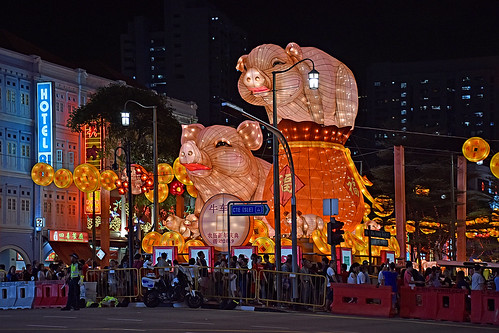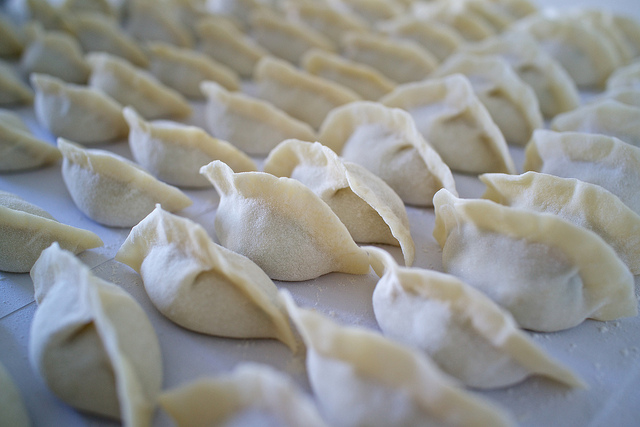
Chinese New Year | Spring Festival
The Chinese New Year, which in China is more commonly referred to as the Spring Festival (春节), is the world’s biggest festival. It is celebrated by a quarter of the global population. With over 2 billion people observing the Chinese New Year festivities, the scale of this holiday makes for some fascinating facts and figures.

World’s Largest Annual Human Migration
During the Spring Festival, most employees have between 7-12 days off work. It is a tradition for city dwellers to return to their hometowns to celebrate the holiday with their extended family. With many Chinese families scattered across the country, these journeys home make for the world’s largest annual migration . In Chinese, this mass migration is called Chunyun (春运), which translates as Spring Migration.
This year, government officials predict that three billion trips will be made during the Spring Festival. With a population of 1.4 billion, that is the equivalent of two journeys per individual. The length of the average journey is 410 kms. The total distance covered by Chinese travellers will be an astonishing 1.2 billion kilometres.
Of the 3 billion Chunyun journeys, 2.46 billion will be made by car, 413 million by train and 73 million by plane. At peak times, 1,000 rail tickets will be purchased every second. An achievement which I doubt any other country could manage effectively – and certainly not the Britain’s beloved National Rail!
The only other annual human migration which comes even close to Chinese New Year is Thanksgiving in North America.

However, with ‘just’ 50 million travellers, the Thanksgiving migration is much smaller than Chunyun. A more accurate comparison would be Thanksgiving, Christmas and the Super Bowl all combined into one!
In recent years, as China’s middle class have become increasingly affluent, a significant number of Chinese families have begun travelling overseas. This year more than 7 million Chinese will travel abroad. Singapore, Thailand, Japan, Australia and North America among the most popular destinations for Chinese travellers.
Food and Drink
Cuisine plays a hugely important role in the Chinese New Year celebrations. Dumplings, fish, glutinous rice cakes, long noodles, spring rolls, turnip cake, and fresh fruits are particularly popular.

Many of dishes eaten during the Spring Festival have auspicious significance: such as dumplings (饺子), which symbolise wealth, and long noodles (长寿面), which symbolise longevity.
In total Chinese families are expected to spend over $100bn on eating and drinking during the lunar festival. One new trend which has become increasingly popular in recent years, is the purchasing of pre-prepared foods via the internet. This modern trend allows families to spend more time celebrating and less time cooking. According to the website Tmall, more than 800,000 meals were sold online during the days leading up to Spring Festival.
The most popular meat to be eaten during Chinese New Year will be pork – and that’s not just because this is the Year of the Pig. In fact, China now consumes 50% of the world’s pork . Fortunately for our little pink friends, there are now efforts to reduce China’s consumption of pork, for ethical and environmental reasons. A new campaign to reduce pork consumption in China has been trending on social media. Animal rights groups are encouraging people to honour these “playful” creatures, and not eat them. #PigYearDontEatThem

When it comes to celebrating the new year, Baijiu , the traditional Chinese spirit (and incidentally the world’s best-selling liquor ) remains the most popular alcoholic beverage. Interestingly there is a sharp difference in the amount of alcohol consumed in different regions of China. Sichuan Province in southwestern China produces and consumes the most Baijiu in all of China. So if you’re looking to get legless during the holidays, Sichuan is probably the place to head!
Gambling and Casinos
And finally, for those with more money than sense, no Chinese New Year would be complete without a trip to the Casinos of Macau, Asia’s Las Vegas. During last year’s Spring Festival, almost one million visitors from mainland China traveled to Macau..
Following the recent opening of the Hong Kong-Zhuhai-Macau Bridge, casino and hotel operators are expecting even more visitors this year. Hotel occupancy rates expected to exceed 95%. According to a recent report, the average visitor to Macau’s casinos has a gambling budget of $3,000 , which does at least guarantee one thing – the Year of the Pig will be a prosperous year for casino owners!